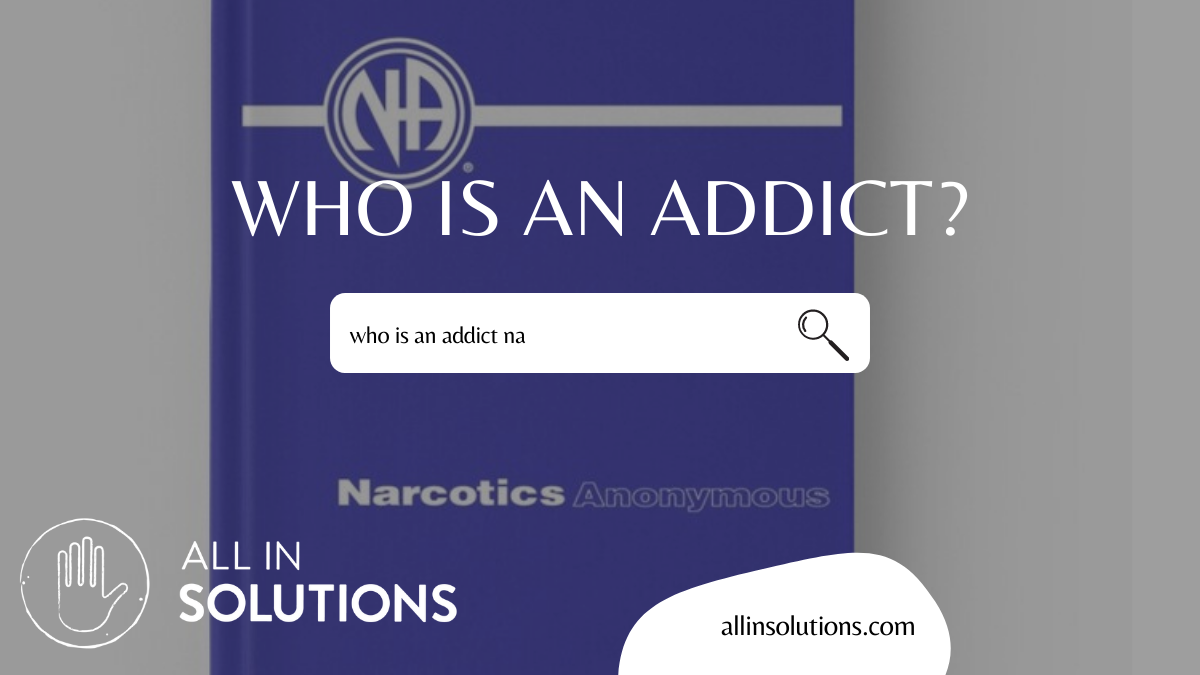Who's an Addict - According to Narcotics Anonymous
The New Definition of Addiction
Is it possible to become addicted? What are the signs and symptoms of an addiction? What should you do if you are addicted? Are you putting your drugs before your responsibilities? Do you have a history of being in jails, rehab centers, or hospitals? Do you have trouble sleeping, eating, or running out of drugs? Do you question your sanity? Do you fear going without drugs? Do you feel guilty about your use?
Related reading: Who Is An Addict Reading Basic Text
Narcotics Anonymous
Narcotics Anonymous: What does it mean? Narcotics Anonymous is an organization of drug-addicts that uses the 12 Traditions as a guide to their journey towards recovery. A program that uses the 12 Traditions guides you on many levels. This includes personal growth and acceptance. There are open meetings and closed meetings. A closed meeting can only be attended by members. An open meeting is available to all. Every meeting is unique, so the traditions that guide them should be used in each type of meeting.
This program offers a different approach to addiction recovery. Anybody who wants to quit using drugs is welcome to join. All ages, sexual orientations and religions are welcome to join AA. Even people on medication replacement therapy can join. Members of AA meet every week in order to share experiences and support each other's recovery. By participating in meetings, members can begin the process of staying sober and reestablishing positive relationships with friends and family.
Arne began to relapse less after a few months in NA. Group friction also decreased. She felt more secure and less fearful of using drugs again. She also felt that NA's principles were too rigid and focused on drug use. She started her own 12-step group. However, she was not able to overcome her addiction and found comfort in other ways.
What can you do to tell if someone is addicted?
The American Society of Addiction Medicine describes addiction as an undiagnosed, chronic brain disorder. However, addiction can be disguised by the addictive person's behavior. Addicts become obsessed with the substance or behavior, ignoring or denying other areas of their lives. These signs can be associated with one substance or another behavior. The severity of the addiction may affect the severity.
Several genes can increase the risk of addiction. Many genes can influence drug dependence, alcohol intake, and the morphine response. Some people have multiple gene variants that may be responsible for a genetic predisposition to addiction. Genetic predisposition does not guarantee addictive behavior. It only accounts for 50% of all addictive behaviours. There are many other methods to identify a potential addict.
Addiction symptoms may manifest as bloodshot eyes and frequent nosebleeds. These symptoms are often accompanied by weight gain, shaking, and a change in social group. People may have unusually many friends. They may visit doctors more than once and look into other people's medicine cabinets. They may also be prescribed medication.

Definition of addiction
Understanding addiction is key to understanding this disease. People become addicted to a substance because of the pleasurable and valuable experience it brings. The process that leads to the release of the craving remains pleasurable and valuable. This cycle can be referred to as the cravings-use-pleasure-rest cycle. People who have an addiction to alcohol or drugs experience the effects of the disease over time. In this article, we provide an overview of the new definition of addiction.
In a recent study, 52 scientific papers have identified five essential elements of the definition of addiction. These elements are: engagement, appetitive effects, compulsions, and loss of control. Although the components of addiction may differ from those that are compulsions, they provide an heuristic foundation for forward-thinking. Although there are still debates about the elements of addiction, these five elements offer a reasonable understanding of the concept.
According to the definition of addiction, a person has an uncontrollable urge to use a certain substance or behavior. The behavior can lead to psychological, physical or even fatal harm. Other activities such as gambling or medication can also lead to addictions. Even prescription drug misuse can lead to addiction. There are fundamental differences between drug abuse and addiction, despite the similarities. Addiction, by definition, is an underlying brain condition that reduces a person's ability to control their impulses.

